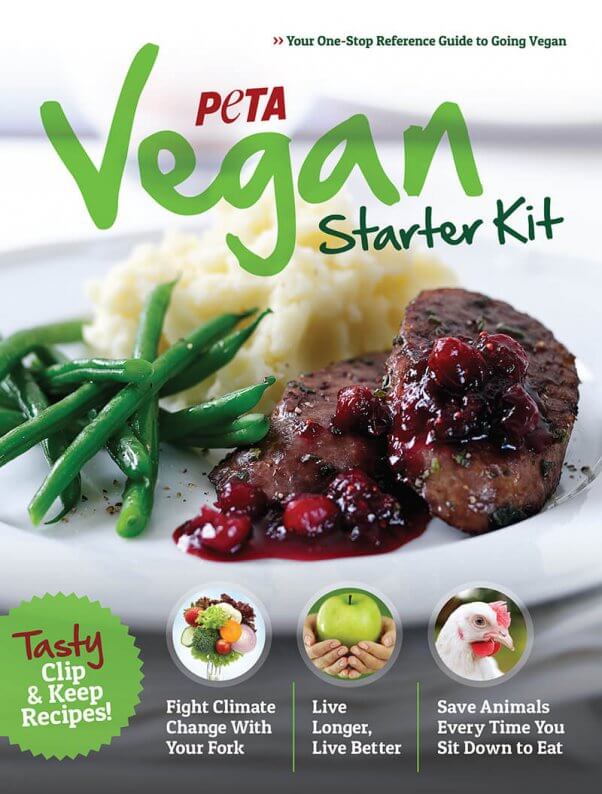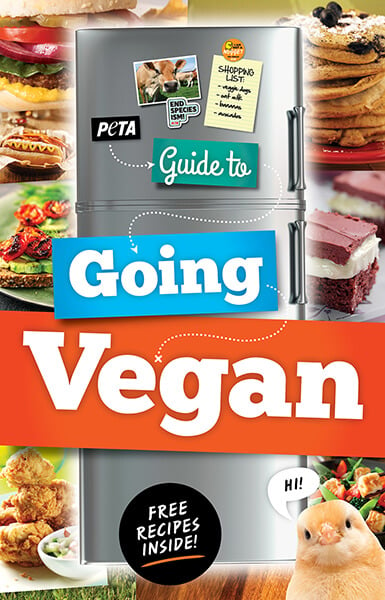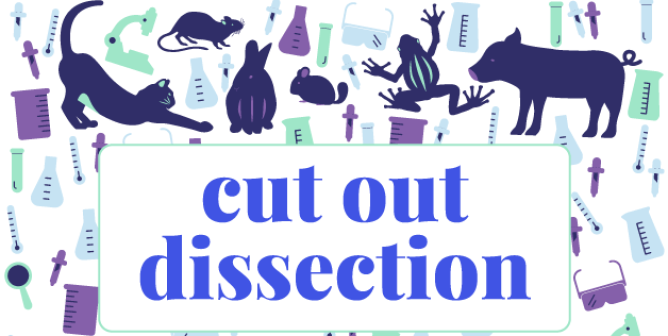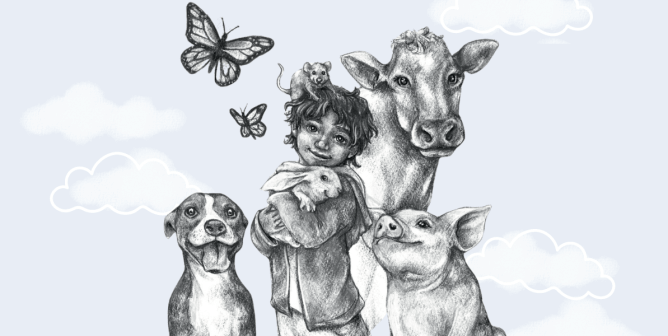Teaching With Film: ‘The Game Changers’ Discussion Questions
Tell your students to forget everything they thought they knew about eating meat. From Academy Award winners James Cameron and Louie Psihoyos, director of The Cove, comes a film that turns the biggest and longest-held meat myth on its head. The Game Changers chronicles “a quest for the truth” that ultimately became “a shocking exposé of the world’s most dangerous myth.”
The film, which is available to stream on Netflix, YouTube, Amazon Prime, and Google Play, follows military combat instructor and former Ultimate Fighting Championship martial artist James Wilks. After being badly injured, he began researching ways he could help his body recover. His search became a five-year quest that led him to four continents and dozens of the world’s top athletes and nutrition experts. “What I discovered was so revolutionary, with such profound implications for performance, health, and the future of the planet itself, that I had to share it with the world,” he says.
Among the experts Wilks meets are Arnold Schwarzenegger, two-time World Surfing Champion Tia Blanco, world record–holding strength athlete Patrik Baboumian, former president of the American College of Cardiology Dr. Kim Williams, founder of the Preventive Medicine Research Institute Dr. Dean Ornish, and several members of the Miami Dolphins football team. They all agree that meat, egg, and dairy consumption is a barrier to optimal health.
View this documentary as a class, then use the discussion questions below to help students understand the information and examine the ideas presented. (If you’re teaching virtually, you can use online tools such as Netflix Party, which includes synchronized video playback and group chat, to watch the film with your students online. Or you can have students watch the film independently and then discuss their responses to the questions as a class using popular online conferencing tools like Zoom or Skype. If these tools aren’t available to you, you could have students chat about the film and the discussion questions in an online forum, such as Google Classroom.) Depending on the needs and abilities of your students, you may wish to pause the film to discuss the questions as a group or have students respond to them in writing after watching the film. You can use this activity to address these Common Core Standards in speaking and listening:
Grades 9–10
- CCSSELA-LITERACY.SL.9-10.1.D Respond thoughtfully to diverse perspectives, summarize points of agreement and disagreement, and, when warranted, qualify or justify their own views and understanding and make new connections in light of the evidence and reasoning presented.
- CCSSELA-LITERACY.SL.9-10.3 Evaluate a speaker’s point of view, reasoning, and use of evidence and rhetoric, identifying any fallacious reasoning or exaggerated or distorted evidence.
Grades 11–12
- ELA-LITERACY.SL.11-12.1.D Respond thoughtfully to diverse perspectives; synthesize comments, claims, and evidence made on all sides of an issue; resolve contradictions when possible; and determine what additional information or research is required to deepen the investigation or complete the task.
- ELA-LITERACY.SL.11-12.3 Evaluate a speaker’s point of view, reasoning, and use of evidence and rhetoric, assessing the stance, premises, links among ideas, word choice, points of emphasis, and tone used.
You could also easily incorporate this activity into a health class unit on nutrition.
Important note: The Game Changers is not rated, but be aware that it contains some profanity. During one segment of the film, the effect of vegan eating on men’s erections is discussed. This segment may not be suitable for all ages. We advise using your professional judgment in determining whether your students are mature enough to view it.
Tell students that the guiding questions for this activity are the following: Should humans eat meat, eggs, or dairy? Why or why not? They should be prepared to state their positions after watching the film.
Discussion Questions
1. Who is the narrator of the film? Briefly describe his background and what led him to research the effects of vegan eating on athletic performance.
Answer: James Wilks is the narrator. He is a former mixed martial arts fighter and winner of the Ultimate Fighting Championship who now teaches fighting techniques to government agencies. After sustaining a sports-related injury, he began researching ways to expedite his recovery and was surprised to learn that the Roman gladiators were predominantly vegetarian. This inspired him to continue his research on the effects of vegan eating on athletic performance.
2. According to Dr. James Loomis, where does the energy for exercise mainly come from? What happens when athletes eat more protein than carbohydrates?
Answer: Dr. Loomis points out that carbohydrates, not protein, provide the energy for exercise. When athletes eat more protein than carbohydrates, they develop glycogen depletion, which can result in fatigue and loss of stamina.
3. How did the false notion that meat gives people energy become popularized?
Answer: In the 1800s, a famous German chemist named Justus von Liebig hypothesized that energy came from animal protein and that “vegetarians were … incapable of prolonged energy.” His beliefs were so widely accepted that they even inspired the U.S. Department of Agriculture’s first protein recommendations. By the time his theory was disproved, people around the world had already bought into the idea that meat gave them energy.
4. Describe cyclist Dotsie Bausch’s training regimen. Why does she say she became “like a machine” after making the transition to a plant-based diet?
Answer: Her training regimen involved cycling up and down mountains six days a week for at least four to five hours a day as well as indoor track sessions and cross-training sessions at the gym. She says she became “like a machine” after starting to eat plant-based because she nearly doubled the amount of weight she could move on the inverted leg sled.
Dotsie hung out with PETA to read through some “mean tweets” and debunk some major myths about going vegan:
5. Is plant-based protein inferior in quality to animal protein? Why or why not?
Answer: No. All proteins are composed of strings of amino acids. The ones that the human body can’t produce are called essential amino acids, and humans must get them from food. All plants contain varying levels of all the essential amino acids, and the most important thing is to consume the appropriate amount. Students can learn more about vegan protein here and here.
6. How did the Conor McGregor/Nate Diaz fight end? How did this change McGregor’s perspective on his way of eating?
Answer: Diaz, who was on a plant-based diet, won the fight, even though Vegas oddsmakers predicted otherwise. After the fight, McGregor, who was a big meat-eater, admitted that his diet ultimately failed him.
7. What did Dr. Robert Vogel’s experiment show in each of his test subjects’ blood samples?
Answer: The test subjects who ate burritos with meat in them had cloudy plasma, indicating that their endothelium—which allows blood vessels to expand and deliver more oxygen to muscles, resulting in better performance—wasn’t functioning properly. The one who ate burritos with beans and avocado in them had clear plasma, indicating that his endothelium was functioning properly.
8. Give two examples from the film of benefits of a vegan lifestyle to people who aren’t athletes.
Answer: When James’ father, who suffered a heart attack, began eating vegan, his health improved. Similarly, when a group of Brooklyn firefighters switched to vegan eating, many experienced weight loss and saw their cholesterol levels and blood pressure improve.
9. What discovery has been made about the foods eaten by early humans? What evidence exists to suggest that humans are better adapted to eating mostly plants as opposed to meat?
Answer: Contrary to popular belief, early humans ate mostly plants. Humans have longer digestive tracts than carnivores do, allowing us to digest plants that require longer processing time. Humans lack the ability to produce vitamin C, which is found in plants, indicating our reliance on them. We have trichromatic vision—as opposed to carnivores, who have dichromatic vision—allowing us to see more colors and find fresh ripe fruit. The human brain requires large amounts of glucose to function properly, and meat is not a good source of this. And our teeth are square and low-cusped, designed to crush and grind plant matter, not tear flesh apart.
10. Where could farmed animals and humans get vitamin B12 before industrial farming? Why is this no longer possible? What is the best way for humans to get enough B12, whether they eat animal foods or not?
Answer: Farmed animals and humans could get B12 by eating traces of dirt on plant foods or by drinking from rivers or streams. This is no longer possible because pesticides, antibiotics, and chlorine kill the bacteria that produce it in the soil and waterways. The best way for humans to get enough B12, whether they eat animal foods or not, is to take a supplement. Students can learn more about the vitamin and find vegan sources of it here.
11. Does soy raise a person’s estrogen levels? Why or why not?
Answer: No. It contains phytoestrogens, compounds that look like estrogens but can actually have the opposite effect, blocking some of the body’s estrogen receptors and preventing real dietary sources of estrogen from taking hold. Students can learn more about soy and some common myths about it here.
12. How did the tobacco industry sell the idea that smoking was healthy? How do the meat, egg, and dairy industries convince people that these foods are healthy?
Answer: The tobacco industry used famous athletes, symbols of strength and health, to sell the idea that smoking was healthy. It also hired researchers to conduct biased studies touting the benefits of smoking to create confusion among consumers. The meat, egg, and dairy industries do similar things today with a new generation of athletes and paid experts.
13. What realization did Damien Mander, founder of the International Anti-Poaching Foundation, have about animals?
Answer: He realized that he was working to protect some species, like rhinos and elephants, but then going home at night to eat other species, like cows, pigs, and chickens. He says, “The easiest way to protect other animals is just not to put them in your mouth.”
14. How does animal agriculture negatively affect the environment?
Answer: Raising animals for food requires a tremendous amount of land and water—not only for the animals themselves but also to grow the food that they eat, which could instead be eaten by humans. This contributes to deforestation and habitat loss. The large amount of animal waste produced on industrial farms also pollutes waterways. The livestock sector produces more greenhouse-gas emissions than the entire transportation industry combined.
The easiest way to protect other animals is just not to put them in your mouth.
Damien Mander, Founder of the International Anti-Poaching Foundation
Because The Game Changers is jam-packed with compelling information and inspiring anecdotes, we couldn’t cover everything in it with these discussion questions. So be sure to take some time after finishing the film to discuss key takeaways and lasting impressions as well as what students were surprised to learn, how their perception of vegans has changed, and how they intend to apply what they learned from the film in their own lives. Your students may feel motivated to make significant changes to their eating habits, so provide them with these resources to help them make the switch to a vegan lifestyle in a healthy and informed way, and encourage them to share the resources with their families and friends:
- Order a free vegan starter kit, which includes everything from recipes and tips on eating out to health information.
- For recipes and information geared toward young people, you can also order PETA’s Guide to Going Vegan.
Remind students to consider the guiding questions. They can use the Building an Argument graphic organizer to develop explanations of their positions and use evidence to support them. They can discuss their positions and evidence in pairs or small groups and then write persuasive essays laying out the critical features of their arguments.
Extend Student Learning
- Host a “compassion challenge,” like TeachKind teacher Dennis Yong, in which students commit to going vegan for a month at a time in exchange for a sticker on their “compassion badge.” Yong laminates the badges for his students to keep at the end of the year as a reminder of their progress. He encourages students to discuss their choices with their families to promote understanding and shares tips on finding vegan-friendly meals in restaurants. As a result, some of his former students have stopped eating animals altogether.
- When students eat vegan, they can improve their own health as well as saving nearly 200 animals’ lives per year. Use this debate kit to help them research and discuss the moral implications of eating meat, eggs, and dairy.
- Going vegan can also lessen our impact on the planet. Use this debate kit to help students research and discuss the harmful effects of animal agriculture on the environment.
- PETA staff members are available to give virtual presentations to your class via Skype, Zoom, or Google Hangout about the benefits of a vegan lifestyle and other animal rights issues. Please fill out the form below to request a speaker.
Using movies as part of a lesson plan on animal rights is an entertaining and effective way to keep students engaged from home while also instilling compassion for animals.
31 Animal-Friendly Movies Teachers Can Stream Right Now—at Home or in the Classroom







